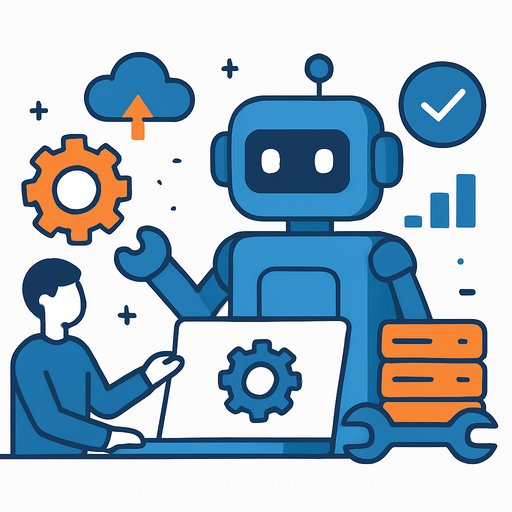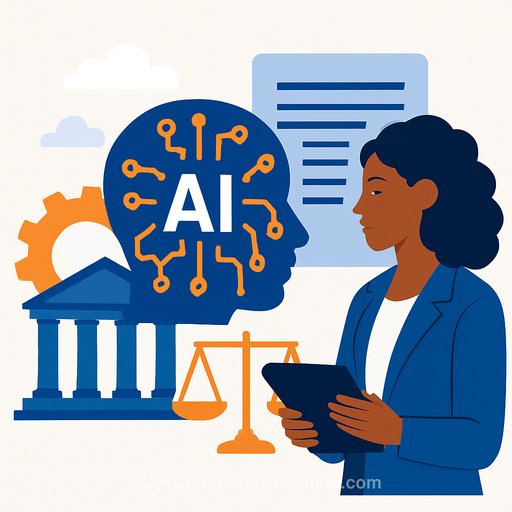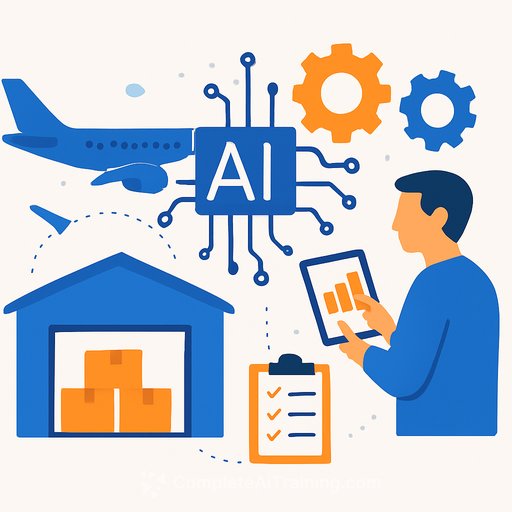Agentic AI in IT Operations: 8 Practical Ways to Move Faster and Cut Costs
Agentic AI uses autonomous agents to make decisions and take action with minimal oversight. For IT operations, that means fewer bottlenecks and tighter control across compute, storage, networking, and security.
The benchmark stays the same: availability, reliability, scalability, and performance at the lowest cost. What changes is how we achieve it-by shifting repetitive work to agents and reserving human attention for strategy and safeguards.
1) Improved compute resource utilization
Agents can watch real-time utilization and right-size resources on the fly-selecting instance types, adjusting configs, and tuning scaling parameters to match workload demand. They can also track data ingress/egress and usage, flag anomalies, and kick off remediation without waiting for a human.
- Define policy guardrails (cost ceilings, performance SLOs, data residency).
- Instrument telemetry across compute, storage, and network paths.
- Start with suggest-only mode; graduate to auto-remediation with rollback.
- Track results: cost per workload, saturation, error budgets.
2) Automated support
The next wave of ops automation is agents you teach, not scripts you maintain. Think SRE-style health checks, ticket triage, root-cause assistance, change execution, and recommendations-delivered at machine speed.
- Centralize knowledge (runbooks, past incidents, architecture docs) for agent retrieval.
- Connect agents to observability, ticketing, and configuration systems with scoped access.
- Enforce security reviews, rate limits, and change windows by default.
For deeper context on SRE practices, this resource is helpful: Google's Site Reliability Engineering book.
3) Faster problem resolution
Agents don't just open tickets-they close them. They can correlate logs and metrics, propose a fix, run a canary, execute inside a change window, and auto-rollback if the SLO dips.
- Pre-approve plays with blast-radius tags and rollback paths.
- Log every agent action for clean postmortems and compliance.
- Measure MTTR and change failure rate; aim for minutes, not hours. See MTTR for definitions.
4) Improved customer support
Multi-agent setups can coordinate across CRM, billing, and order systems to resolve complex inquiries end-to-end. That means faster first-contact resolution and less swivel-chair work for your team.
- Map intents to systems of record and define escalation paths.
- Add PII controls, redaction, and data minimization from day one.
- Track outcomes: FCR, CSAT, average handle time, and re-open rates.
5) Rapid decision-making on infrastructure issues
Instead of following a rigid script, an agent can evaluate signals and pick the smallest effective fix. Example: if a database service is unresponsive, restart the service-not the whole server-then verify health.
- Maintain a ranked catalog of remediations from least to most disruptive.
- Use human-in-the-loop approvals for moderate/high-risk actions.
- Continuously learn from outcomes to refine decision policies.
6) Streamlined software testing
Agents can generate test cases, maintain regression suites, and automate baseline tests so engineers can focus on integrations and edge cases. Delivery gets faster, quality improves, and risk drops-if you keep guardrails tight.
- Seed agents with canonical test suites and approved patterns.
- Lock write scopes; require PRs and code reviews for any changes.
- Watch for loops or destructive edits; enforce sandboxes and hard stops.
7) Enhanced team productivity
Move the repetitive, tier-one grind to agents and give your people back time for design, optimization, and higher-leverage work. Adoption isn't instant; expect some cost and friction to get it right.
- Start small: pick one pain point, prove value, document lessons.
- Expand by domain with shared standards for access, observability, and rollback.
- Publish clear RACI so humans know when to supervise, override, or let agents run.
8) Self-healing systems
Self-healing means detection and recovery run on their own. An agent can spot a memory leak, spin up a replacement instance, drain traffic, patch the faulty node, and confirm recovery-often before anyone gets paged.
- Define health checks, golden signals, and error budgets across services.
- Attach auto-remediation playbooks with strict blast-radius controls.
- Use chaos experiments to validate that self-healing actually works.
Governance that makes this safe (and real)
Set policy boundaries, audit everything, and keep sensitive data out of reach. Use change windows, approvals, canaries, and rollbacks as defaults-not exceptions.
- Version agent prompts, tools, and permissions like code.
- Isolate environments; test in staging with production-like data characteristics.
- Report business outcomes: cost per transaction, uptime, and user satisfaction.
If your ops team is leveling up skills for AI-driven automation, this program is a solid starting point: AI Certification for AI Automation.
Your membership also unlocks:






